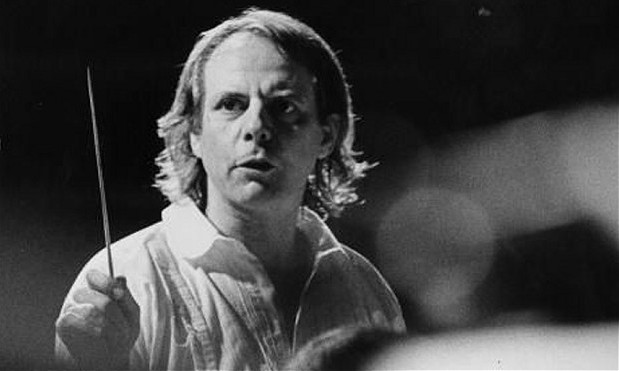
Karlheinz Stockhausen was a German composer of the 20th and the early 21st Century. He is remembered for his ‘compositional series’ and his analytical contributions to music theory.
Stockhausen was born on August 22, 1928 in Burg Modrath, which was then known as ‘the castle of the village of Modrath’. He received his first instruction in music in Altenberg under the Principle Organist of the Altenberg Cathedral, Franz-Josef Kloth; this was when Stockhausen was seven years old. He had a difficult family life as his mother was institutionalized following a mental breakdown; his father later remarried, and Stockhausen and his new step-mother shared an unhealthy relationship. It was later reported that Stockhausen’s mother was gassed by Nazi Authorities in 1941 as the inmates of the mental institution were classified as “useless eaters”; this was an incident that Stockhausen often dramatized in his operas.
Stockhausen continued his piano education at the boarding school he went to in Xanten; he also familiarized himself with the violin and the oboe. In 1947, Stockhausen was admitted to the Hoshschule fur Musik Koln (Cologne Conservatory of Music), where he studied music pedagogy and the piano for four years. He also studied harmony and counterpoint at the University of Cologne during the same time. Stockhausen also studied musical aesthetics, analysis, and composition with Olivier Messiaen and Darius Milhaud at Cologne.
Much of Stockhausen’s early fame resulted due to his analyses of Western Classical Music by Anton Webern, Mozart, Debussy, Stravinsky, Michael von Biel and many others. His contributions to compositional theory are also highly revered. His most famous scholarly publication was his article “…wie die Zeit vergeht…” or “…how time passes…”. Stockhausen also published articles on electronic music, on the use of graphics in music, and on the ‘unity of musical time’.
Stockhausen started composing irregularly in 1950. Many of his publications from the 1970s, such as “Chore fur Dores” and “Drie Lieder”, were written in 1950. Stockhausen also started experimenting with athematic serial composition techniques during this time, examples include “Kreuzspiel” and “Punkte” and “Kontra-Punkte”. In 1955, he came up with the remarkably popular idea of ‘group composition’ in a radio show titled “Gruppenkomposition: Klavierstuck I”. Stockhausen also started work on electronic music late in the decade (“Kantakte” from 1958 is an oft-quoted example), and his use of ‘graphical notation’, which was a style of notation that could be altered to suit the artist, also made headlines.
Stockhausen’s masterpieces of electronic music continued well into the 1960s and the 1970s, these included “Microphonie I (1964)”, “Microphonie II (1965)”, “Mixtur (1964)” and “Hymnen (1966-1967)”. He also started exploring the idea of ‘process composition’ in the late 60s. His vocal compositions, including “Prozession (1967)”, “Spiral (1968)” and “Kurzwellen (1968)” are considered to be some of the best works in the ‘process composition’ genre. Stockhausen’s interests then shifted to the use of ‘Spatialization’ in his compositions, which he incorporated in several electronic and instrumental works such as “Gruppen” and “Carre’”. He then went on to master the ‘formula composition’ technique.
Stockhausen then turned his attention to a cycle of seven operas titled “Licht: Die sieben Tage der Woche”, or “Light: The Seven Days of The Week”, which he worked on from 1977 to 2003. Each opera centered on a theme or a historical tradition. After 2003, Stockhausen composed “Klang”, another cycle of compositions that instead centered on the hours of the day.
Karlheinz Stockhausen died on December 5, 2007 of a heart attack in North Rhine. He is remembered as one of the greatest composers and theorists of the modern era.